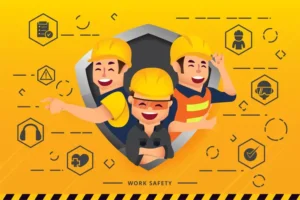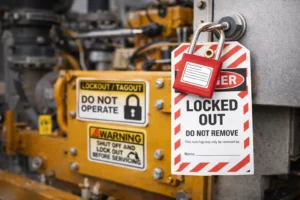When it comes to workplace safety, one of the most trusted names in the United States is OSHA, the Occupational Safety and Health Administration. OSHA plays a central role in establishing safety standards and ensuring their adherence across a wide range of industries. Given the increasing reliance on online education, many workers and employers wonder: Can OSHA training be completed online?
The answer is yes—but with important qualifications. While OSHA itself does not provide direct training, it authorizes specific providers to deliver OSHA-compliant training, including online courses. In this blog, we’ll explore how OSHA training works online, what course options are available, the difference between online and in-person formats, and how to ensure you’re enrolling with a legitimate provider.
1. Can You Take OSHA Training Online?
Yes, OSHA training is available online—but not through OSHA directly.

OSHA does not administer training courses itself. Instead, it relies on a network of OSHA-authorized providers to offer courses that meet OSHA standards. These providers are often affiliated with the OSHA Outreach Training Program, which was developed to promote workplace safety and health.
Among the most commonly available online OSHA courses are the:
- OSHA 10-Hour Training, designed for entry-level workers
- OSHA 30-Hour Training, created for supervisors and safety professionals
These courses cover essential safety topics and are designed to improve awareness of workplace hazards. The 10-hour course gives a broad overview, while the 30-hour course dives deeper into risk identification, mitigation strategies, and regulatory adherence.
Online versions of these courses offer the same level of content and certification as in-person training—but only when delivered by an OSHA-authorized provider.
2. What Are the Categories of OSHA Courses?
OSHA’s Outreach Training Program offers training in two main categories, based on industry type:

Construction Industry
This version is geared specifically toward the hazards and safety protocols found on construction sites. It includes topics such as fall protection, scaffolding, power tool safety, trenching, and electrical hazards.
In cities like New York, OSHA 10 or 30-Hour Construction training is legally required under the NYC Site Safety Training (SST) program. Workers must complete an authorized OSHA course to qualify for the SST card, which is necessary for working on many construction sites within the city.
General Industry
This category is designed for workers in manufacturing, warehousing, healthcare, and other non-construction fields. It covers general safety and health hazards, including hazard communication, machine guarding, personal protective equipment (PPE), and ergonomics.
Each OSHA 10 or 30-hour course is available in both Construction and General Industry formats. It’s important to select the correct category that applies to your job or workplace setting to ensure adherence and relevance.
3. What is the Difference Between In-Class and Online Training?
Both in-person and online OSHA training are valid, provided they are offered by authorized training providers. However, each format has its pros and cons, depending on the learner’s preferences and scheduling needs.

Online OSHA Training
- Self-Paced Learning: Participants can complete modules at their speed, making it easier to fit training around work or personal obligations.
- 24/7 Access: Online courses can be accessed anytime, from anywhere with an internet connection.
- Cost-Effective: Typically more affordable than classroom training due to lower overhead costs.
- Mobile-Friendly: Many courses are accessible on tablets or smartphones, allowing for flexibility.
Online learning is especially useful for those with busy schedules, limited transportation, or remote job locations. However, it requires discipline, self-motivation, and basic digital literacy.
In-Class OSHA Training
- Live Interaction: Learners can ask questions and receive real-time feedback from instructors.
- Group Activities: Some individuals find it easier to retain information through peer discussions and hands-on exercises.
- Structured Environment: A classroom setting offers a fixed schedule that can encourage consistent progress.
For those who prefer structured learning and real-time instruction, in-person classes might be more effective.
Ultimately, both formats are considered valid by OSHA as long as they are conducted through authorized channels.
4. Can Any Website Provide OSHA Online Programs?
No. Not every website claiming to offer OSHA training is legitimate.

OSHA-authorized training can only be delivered by organizations and trainers who have been formally approved through OSHA’s Outreach Training Program. Many websites falsely claim to offer “OSHA certification,” but the certificates from these unauthorized providers are often not valid.
The Risks of Choosing an Unauthorized Provider
- Invalid Certification: Employers and regulators may reject certificates not issued by authorized trainers.
- Financial Loss: Users may spend money on courses that don’t meet OSHA requirements.
- Legal Liability: Employers who rely on fake certificates could face fines or penalties during inspections.
How to Verify a Provider's Authorization
- Check OSHA’s Website: Visit www.osha.gov and search for authorized Outreach Training providers.
- Look for Official Language: Valid courses will state that they are part of the “OSHA Outreach Training Program.”
- Request Trainer Credentials: Authorized trainers will be able to share their official trainer ID and affiliations.
- Contact Customer Support: Reputable providers should offer clear support channels to verify their legitimacy.
Conclusion
While OSHA sets the safety standards and guidelines that workers and employers must follow, it does not directly offer training. Instead, it authorizes a network of trusted providers to deliver OSHA-compliant courses-both in-person and online.
The most commonly sought-after training options, OSHA 10-Hour and 30-Hour courses, are widely available online for both Construction and General Industry. These online courses offer a flexible, accessible alternative to in-person classes-especially for workers with unpredictable schedules.
However, not all websites are authorized, and choosing the wrong provider can lead to wasted time, money, and effort. To ensure your training is valid and recognized, always confirm that an OSHA-authorized provider is offering your course.





